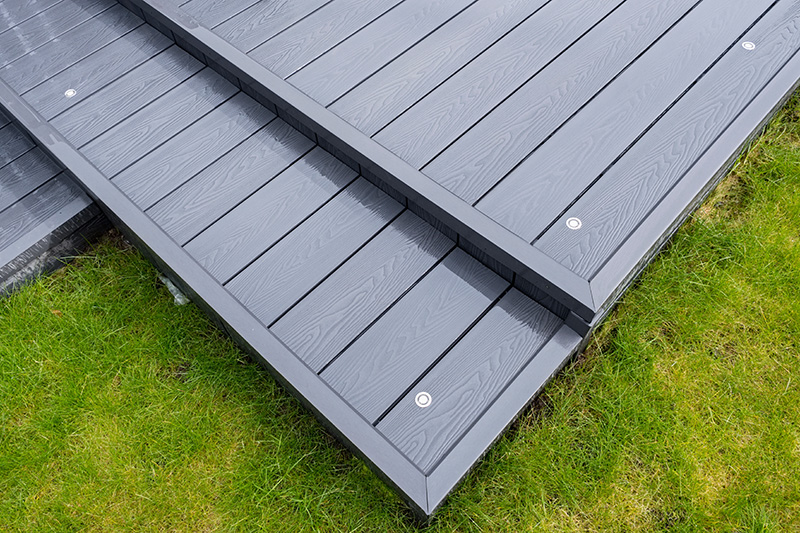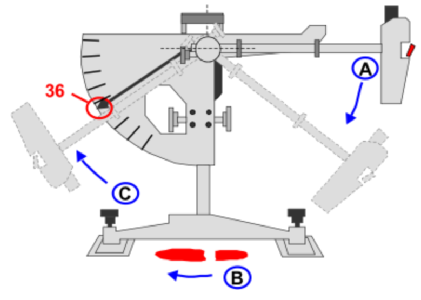
How slippy can composite decking be?
Overview
The 1992 workplace regulations (Health, Safety and Welfare), require floors to be suitable, in good condition and free from obstructions, so that people are able to move about safely.
The guidance from the Health and Safety Executive (HSE) has determined that the most reliable and robust method of testing is something known as the Pendulum Test. This is the method that is used whenever the HSE is looking at local authority advice and enforcement action.
Is composite decking slippery when wet?
In short, no. Even when wet, composite decking has a low risk for slipping. Keeping your decking clear or any obstructions such as mildew or other algae growths will help keep your decking in tip-top shape and preserve the non-slip properties.
Testing slip resistance on decking boards
The way that the Pendulum Test (BS 7976: Parts 1-3, 2002) works is by replicating a heel striking a surface in a dynamic way, as shown in the image below:

The purpose of the test is to imitate a regular pedestrian heel strike, the most common action that regularly results in slipping. When a pedestrian heel strikes a wet floor a fluid film is created between them, which can cause the slip (90% of slips occur on wet floors). The test therefore works in wet conditions because it generates a similar fluid film between the slider and the floor. (The heel strike is point B). The result (which is at point C) is called the Coefficient of Friction (CoF), a direct measure of the slip resistance of a floor.
R-Ratings in Flooring
Another common measure used to describe slip resistance is called an “R-Rating”. This is a value beginning at 9, with a maximum of 13. A value of nine designated something as being very slippery, whereas a number of thirteen classes something as not very slippery. This number is determined by the point at which people generally fall when taking small forwards and backwards steps on an oil covered flooring sample that is having its ramp (angle of incline) gradually increased.
Dream Decking composite decking is anti-slip and contains special anti-slip technology for a low risk of slipping. It is also worth noting that to keep your decking in its best condition to protect against slips, the decking surface should be kept clean and clear of mildew/algal growth.
Disclaimer: It is the customer’s responsibility to determine the suitability of Dream Decking for their particular private or commercial installation. Should your plans include a ramp or incline of any kind it is the customer’s responsibility to ensure the installation meets Part M regulations ("Access to and use of Buildings") which stipulate the angle of slope required and the interval for rest areas. To assist with extra tread purchase we recommend the fitting of Grit Strips to the board surface. Always install boards at right angles to the main direction of travel to make best use of Dream Decking’s slip resistant properties. To maintain traction levels, it is imperative that the deck is designed to allow proper drainage and the deck surface is kept as clean as possible.


